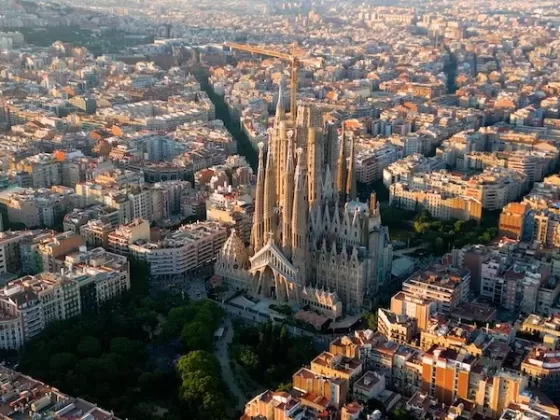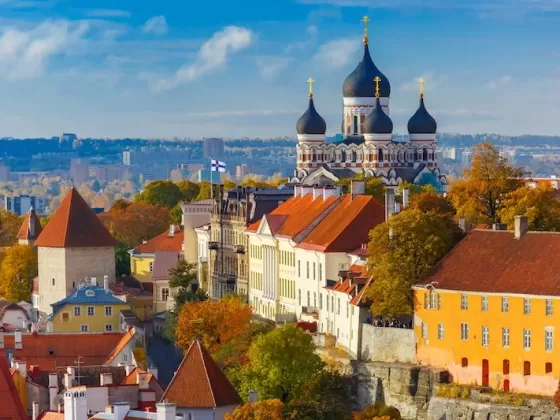Working at a mid-sized corporation, let’s say you’ve been authorized to work fully remotely, but the question soon pops into your head: just how remote can I be?
With remote work becoming increasingly common, a discreet new trend is taking hold among workers—”quiet vacationing.” This involves staffers continuing to work while traveling, often overseas, without informing their bosses.
It may seem like a natural extension of remote work, but quiet vacationing raises questions about workplace trust, employee autonomy, and the definition of vacation time.
A Closer Look at Quiet Vacationing
Quiet vacationing refers to employees working while traveling without disclosing their location to their boss, or the fact that they are away from home. It differs from “quiet quitting”—a term that refers to doing the bare minimum at work—as quiet vacationers continue to fulfill their job responsibilities while combining leisure with work.
The irony is that, if quiet vacationing workers are working enough that their bosses don’t notice any difference, can it really be called vacation? They might be away from home, but few would consider it vacation if they’re continuing to work full-time.
For these workers, the issue often boils down to wanting more flexibility and fearing the judgment of colleagues and supervisors if they disclose their travel plans. Another issue is the constant pressure to perform, which leaves many workers feeling they can’t take time off.
A June survey by Harris found that nearly half of all American workers have quiet vacationed. In today’s globalized, post-pandemic workplace, remote work has become the norm and blurred the lines between personal and professional, encouraging employees to experiment with working from different locations—be it a beach in Bali or a café in Tokyo.
Why Vacation Quietly?
One of the key drivers behind quiet vacation is a desire for greater autonomy and control over one’s time. Employees today are working longer hours in increasingly competitive job markets, yet want to fulfill post-pandemic travel aspirations.
Many have found that quiet vacationing allows them to strike a balance between these competing demands, particularly in industries that emphasize results over physical presence. Justin Ong, a 27-year-old employee at a multinational HR firm, took 10 quiet vacations in 2023, according to the Straits Times.
Working remotely from various countries across Asia, he used public holidays and leave days to cover some absences, while continuing to work for other weeks. Ong views quiet vacationing as a way to maximize his leisure time while still meeting work expectations.
The Challenges of Quiet Vacationing
Despite its allure, quiet vacations come with significant challenges. Flight delays, unreliable internet connections, and the need to always be “on” can make it difficult to fully relax or enjoy one’s trip. Ong, for example, has had to take meetings at airports and deals with constant anxiety that something might go wrong while he’s away from his desk.
“There are many times in my travels when I think, ‘This place is awesome. Why am I here only for a couple of days?’” says Ong, who gets 15 vacation days each year. “There are so many places in the world that deserve a few weeks.”
The lack of transparency can lead to ethical and logistical concerns. If employees are working remotely from far-flung locations without informing their employers, questions of accountability arise.
What if a flight is cancelled and the staffer is unable to make it back to the office in time for a big meeting? Supervisors may be stunned to learn that a chunk of their workforce has been logging in from a Caribbean beach.
The Future of Work and Travel
Experts argue that companies need to discuss the details of flexible work arrangements to prevent this trend from becoming a source of tension. Dr. Sriram Iyer, an adjunct lecturer at the National University of Singapore Business School, emphasizes that employers must adjust to the growing demand for work-life integration or risk pushing employees to take matters into their own hands.
Some companies are already embracing more permissive work-from-anywhere policies. Since 2021, tech giants like Google and Airbnb have introduced policies that allow employees to work remotely from any location for a set number of weeks per year.
These policies could serve as models, making it more acceptable for workers to openly combine work and travel. Dr Paul Lim, senior lecturer at the Singapore Management University, admits that some self-motivated employees can balance the personal and professional without compromising work quality.
“Think of digital nomads who are living in traditional holiday destinations like Phuket and Bali, but still running businesses or working remotely,” he told Straits Times.
But this is a clear risk. Dr. Iyer suggests that if companies fail to have important conversations, quiet vacationing could turn into “loud vacationing,” where employees openly demand the ability to work from anywhere without fear of repercussions.
Looking Ahead
Quiet vacationing is a clear signal that employees are seeking a new relationship with work and travel — one that prioritizes flexibility and freedom. As remote work continues to evolve, employers will likely need to rethink their approach to vacation time.
Whether through formal policies or open discussions, the future of work may very well include employees who are as likely to be on a beach as they are in a boardroom.
EA Editorial Staff










